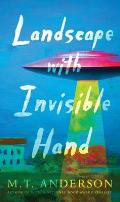“Comics and Medicine” Coming to MICE, Oct. 21
This session is being organized by Matthew Noe, the Graphic Medicine Specialist for the National Network of Libraries of Medicine, New England Region. He wrote about it here on the agency’s blog.
Here’s an extract from Matthew’s posting:
In anticipation of this panel, I asked each panelist to say in a few sentences what graphic medicine is to them. Here are their responses – a bit of a teaser of the panel to come!I’m looking forward to hearing more! Our session is at 11:00 A.M. on Saturday in the Auditorium of University Hall, 1815 Massachusetts Avenue, Cambridge.
Cathy Leamy: Graphic medicine is anything involving comics/cartooning and health and illness. I love that it’s not rigid and nailed down; the door is open for all kinds of explorations and investigators. Health education comics, illness memoirs, analysis of comics for medical themes, art therapy, teaching self-expression and empathy through comics making – so many applications are possible, and we all benefit from the cross-pollination of being exposed to them.
Kriota Willberg: My goal as a cartoonist making GM is to normalize medicine and the body. I hope to make illness, anatomy, and science a benign and familiar trio of actors in our lives, thereby mitigating the anxiety and confusion that often effects patients and their families, and stigmatizes the ill.
Iasmin Omar Ata: [To me, graphic medicine is] using unique mediums to heal through the power of art. Particularly in comics and games, there exists such an opportunity for those with illness to speak, be heard, listen, and heal.
Matthew Noe: Graphic medicine, beyond the strict definitions and the difficult task of reigning in what exactly it means to be a comic, is about communication. Patients communicating with physicians. Physicians communicating with patients. Family communicating with family. Comics can give voice to the voiceless, clarity to the unclear, and can help us refocus medicine on the human.





